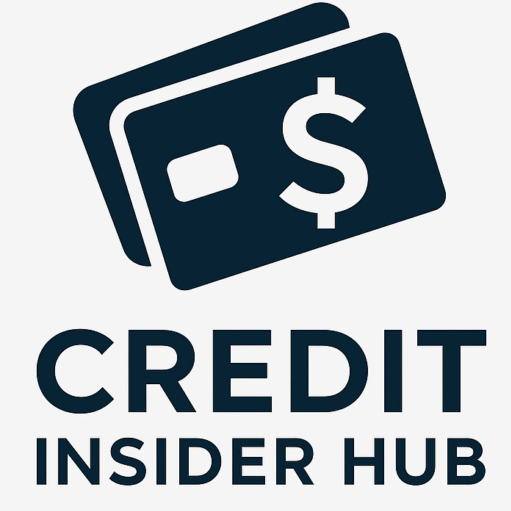What Is a Credit Card
A credit card is a financial instrument that allows you to make purchases and withdraw cash using a pre-approved credit limit from the financial institution, functioning as a revolving loan where the user can pay the full statement amount or just the minimum payment, with interest charged on the remaining balance. This system offers convenience and financial flexibility, but also requires discipline and wisdom to avoid excessive debt that can compromise personal and family financial stability.
Credit cards represent a powerful tool in the modern economy, offering benefits such as fraud protection, rewards programs, ease of online shopping, and credit history building. However, improper use can lead to devastating consequences, including growing debt, compound interest, and compromised financial health.
The decision to use a credit card, like many important choices in life, requires careful reflection on the consequences of our actions. Interestingly, the Bible teaches us about the importance of proximity and timing in our decisions – as we see in the story of Jesus and Lazarus, where the distance Jesus was when Lazarus died had profound significance for the miracle that followed. Similarly, our “distance” or proximity to wise financial principles determines the outcome of our credit card decisions.
This comprehensive guide provides essential information about credit cards, from basic concepts to advanced strategies for responsible use, always considering principles of stewardship and financial responsibility.
How Credit Cards Work
Basic Operating Mechanism
Credit cards operate through a three-party system: the cardholder, the issuing financial institution, and the merchants that accept the card.
When you use the card to make a purchase, the financial institution pays the merchant on your behalf, creating a debt between you and the bank. This transaction is recorded in your account and will be included in the next monthly statement.
The credit limit represents the maximum amount you can spend using the card, determined by the financial institution based on your income, credit history, and demonstrated payment capacity.
With each purchase made, your available limit decreases, being restored when you make statement payments. This cycle allows continuous card use within the established limit.
Billing and Payment Cycle

The billing cycle is the period during which your purchases are recorded to compose a specific statement, generally lasting about 30 days.
After the cycle closes, you receive the statement with all transactions made during the period, total amount due, minimum payment, and due date for payment.
The period between statement closing and the due date is called the grace period, during which you can pay the full amount without interest charges on purchases.
If you pay only the minimum amount or a partial amount, interest will be charged on the remaining balance, and this amount will be included in the next statement with compound interest.
Types of Transactions
Credit cards allow different types of transactions, each with specific characteristics and costs.
Regular purchases are the most common transactions and benefit from the grace period when the statement is paid in full by the due date.
Cash advances generally have immediate fees and interest that begins accruing immediately, without a grace period, making this option more expensive.
Balance transfers allow moving debts from other cards, frequently with specific fees and differentiated interest conditions.
Bill payments through the card may have additional fees and should be carefully considered in relation to the benefits offered.
Advantages of Credit Cards
Convenience and Security
Credit cards offer significant convenience for daily transactions, eliminating the need to carry large amounts of cash.
Security is an important advantage, as cards offer fraud protection and allow disputing improper charges, something impossible with physical cash.
Online purchases are facilitated and safer with credit cards, which offer additional layers of protection against digital fraud.
The ability to track expenses through detailed statements helps with financial control and budget planning.
Rewards Programs and Benefits
Many cards offer rewards programs that return a percentage of spending in the form of cashback, points, or airline miles.
Additional benefits may include travel insurance, purchase protection, extended warranty, and access to VIP airport lounges.
Some cards offer rotating cashback categories that change quarterly, allowing you to maximize rewards on different types of spending.
Points programs can be transferred to partners, offering flexibility to redeem rewards according to specific needs.
Building Credit History
Responsible use of credit cards is one of the most effective ways to build and maintain good credit history.
Timely payments and maintaining low limit utilization demonstrate financial responsibility for future credit applications.
Good credit history facilitates approval for loans, mortgages, and other financial products with better terms.
Diversifying your credit profile through different types of accounts, including cards, contributes positively to your credit score.
Disadvantages and Risks of Credit Cards
High Interest and Fees
Credit cards often have the highest interest rates among financial products, potentially exceeding 25% APR in the United States.
Additional fees include annual fees, cash advance fees, late payment fees, and over-limit fees, which can significantly increase the card’s cost.
Compound interest causes debts to grow rapidly when only minimum payments are made, creating a vicious cycle of debt.
The complexity of fee structures can make it difficult for consumers to understand the real cost of credit used.
Ease of Debt Accumulation
The ease of card use can lead to impulsive and uncontrolled spending, especially when the limit is high relative to income.
The temporal separation between purchase and payment can create a false sense that money is “available” when it’s actually borrowed.
Multiple cards can amplify the problem, allowing debt accumulation on several fronts simultaneously.
Social pressure and aggressive marketing can influence inappropriate purchase decisions using available credit.
Impact on Financial Health
Credit card debts can consume a significant portion of monthly income, limiting savings and investment capacity.
Financial stress caused by high debts can affect mental health, family relationships, and work productivity.
Payment difficulties can lead to negative credit reporting, limiting access to other financial products and opportunities.
The debt cycle can perpetuate for years, preventing financial progress and achievement of long-term goals.
How to Choose the Ideal Credit Card

Evaluating Personal Needs
Before choosing a card, it’s essential to honestly evaluate your spending habits, payment capacity, and financial goals.
Consider whether you plan to pay the statement in full every month or if you’ll occasionally need to finance purchases, as this affects the importance of interest rates.
Analyze your spending patterns to determine if cards with specific cashback categories or points programs would be more advantageous.
Evaluate your financial discipline and ability to resist spending temptations to determine if a high limit would be beneficial or harmful.
Comparing Rates and Benefits
Compare annual fees between different cards, considering whether the offered benefits justify the annual cost.
Analyze interest rates, especially if you plan to occasionally finance purchases or maintain a balance.
Examine rewards programs in detail, including accumulation rates, redemption options, and possible limitations or expirations.
Consider additional benefits like insurance, purchase protections, and concierge services, evaluating whether you’ll actually use these features.
Analyzing the Financial Institution
Research the reputation of the issuing financial institution, including customer service quality and problem resolution.
Verify card acceptance, especially if you travel frequently or shop at specific establishments.
Analyze the ease of use of digital channels, mobile apps, and online account management systems.
Consider the institution’s financial stability and market presence to ensure service continuity.
Strategies for Responsible Use
Expense Control and Budgeting
Establish a monthly budget that includes all planned credit card expenses, treating it as real money that needs to be paid.
Use the card only for planned purchases within the established budget, avoiding impulsive spending that can compromise your finances.
Monitor your spending regularly through the bank’s app or online statements, always staying aware of the accumulated statement amount.
Establish a personal card usage limit below the official limit, creating a safety margin for emergencies.
Full Statement Payment
Whenever possible, pay the full statement amount by the due date to avoid interest and maintain a healthy credit usage cycle.
Set up reminders or automatic debit to ensure you never forget to pay the statement, avoiding late fees and interest.
If you can’t pay the full amount, pay as much as possible above the minimum to reduce the impact of compound interest.
Avoid making only minimum payments, as this can create a debt cycle that’s difficult to break due to high interest.
Conscious Limit Utilization
Keep card utilization below 30% of available limit to preserve your credit score and demonstrate responsible use.
Don’t view the card limit as available money, but as an emergency tool or convenience that should be used sparingly.
If you need a higher limit for a specific purchase, request a temporary increase instead of using multiple cards.
Consider reducing the limit if you have difficulty controlling spending, creating a natural barrier against excessive use.
Financial Stewardship Principles
Responsibility and Accountability
Financial stewardship involves recognizing that we are responsible for managing resources wisely and ethically, considering the impact of our financial decisions.
Just as Jesus demonstrated wisdom in his decisions about when to act and when to wait, we should exercise discernment in our financial choices, considering not only immediate benefits but long-term consequences.
Establish accountability systems, whether through a spouse, financial mentor, or simply detailed records that allow regular evaluation of your decisions.
Recognize that financial decisions affect not only you, but your family and community, requiring careful consideration of broader implications.
Planning and Prudence
Careful financial planning is a fundamental principle of stewardship, involving preparation for future needs and emergencies.
Use credit cards as part of a broader financial strategy, not as a solution to cash flow problems or lack of planning.
Develop an emergency fund before depending on credit for unexpected situations, creating a solid foundation for your financial security.
Consider the opportunity cost of credit use – what you could do with the money that goes to interest if you had paid cash.
Generosity and Purpose
Financial stewardship includes the ability to be generous and use resources for purposes greater than personal consumption.
Avoid letting credit card debts limit your ability to contribute to important causes or help others in need.
Use credit card rewards intentionally, whether to reduce family costs or contribute to specific financial goals.
Maintain perspective on the role of money and credit in your life, remembering they are tools to serve greater purposes, not ends in themselves.
Alternatives to Credit Cards
Debit Cards
Debit cards offer convenience similar to credit cards but debit directly from your checking account, eliminating the risk of debt.
While they don’t build credit history, debit cards help maintain financial discipline by limiting spending to available money.
Many debit cards offer rewards programs, although generally less generous than credit card programs.
Fraud protection on debit cards is lower than on credit cards, requiring greater care in use.
Prepaid Cards
Prepaid cards allow loading a specific amount and using up to that limit, offering complete control over spending.
They’re useful for specific budgets, gifts, or for people who want to completely avoid the risk of debt.
Some prepaid cards offer automatic savings features or parental controls to teach financial education.
Fees may be higher than other card types, but they completely eliminate the risk of debt and interest.
Cash and Digital Payments
Using physical cash forces immediate spending awareness and completely eliminates the risk of debt.
Digital payment apps like mobile wallets offer convenience without credit, transferring money directly between accounts.
Digital wallets can be loaded with specific amounts, combining digital convenience with spending control.
Planning cash purchases can result in better prices and negotiations, in addition to eliminating interest costs.
Credit Card Debt Recovery
Payment Strategies
If you already have credit card debt, develop a clear strategy for payoff, prioritizing cards with higher interest rates.
The “snowball” method involves paying smallest debts first to create psychological momentum, while the “avalanche” method focuses on highest interest rates.
Consider debt consolidation through personal loans with lower interest or balance transfers to cards with better terms.
Negotiate with financial institutions for interest reduction, installment plans, or even discounts for cash payment.
Behavior Changes
Identify triggers that led to debt and develop specific strategies to avoid repeating the same patterns.
Implement a “pause” period before non-essential purchases, allowing reflection on the real need for the purchase.
Seek support from family, friends, or financial support groups to maintain motivation during the recovery process.
Develop alternative sources of satisfaction that don’t involve spending, like free hobbies, exercise, or low-cost social activities.
Preventing Relapses
After paying off debts, keep only one credit card with a low limit to preserve credit history without excessive risk.
Establish a robust emergency fund to avoid dependence on credit in unexpected situations.
Continue monitoring expenses and maintaining detailed budgets, even after resolving debt problems.
Celebrate financial progress milestones in ways that don’t compromise gains achieved, reinforcing positive behaviors.
Financial Education and Credit Cards
Teaching Young People and Teenagers
Education about credit cards should start early, teaching concepts of interest, credit, and financial responsibility before young people have access to cards.
Use practical examples and simulations to demonstrate how compound interest can transform small debts into major financial problems.
Teach the difference between needs and wants, helping young people develop criteria for responsible purchase decisions.
Consider prepaid cards or low-limit cards as supervised educational tools to teach responsible use.
Learning Resources
Use online compound interest calculators to visualize the real impact of different credit card payment strategies.
Participate in financial education courses offered by banks, credit unions, or non-profit organizations.
Read books and articles about personal finance from respected authors who emphasize principles of responsible credit use.
Track your financial progress through expense control and budget planning apps.
Developing Discipline
Practice self-control techniques like the 24-hour rule for non-essential purchases, allowing time for reflection.
Develop regular financial review rituals, examining expenses and progress toward financial goals.
Establish non-financial rewards for achieving spending control goals, reinforcing positive behaviors.
Cultivate an abundance mindset based on gratitude for what you have, reducing unnecessary purchase impulses.
Frequently Asked Questions
What’s the difference between credit and debit cards?
Credit cards allow spending money borrowed by the bank up to a pre-approved limit, with later payment through monthly statements. Debit cards debit directly from your checking account, using only money you possess. Credit cards build credit history and offer more protections, but can lead to debt.
How are credit card interest rates calculated?
Interest is calculated on the outstanding balance when you don’t pay the full statement amount. The monthly rate is applied to the remaining balance, and interest is incorporated into the balance for the next month (compound interest). For example, with a 15% monthly rate on $1,000, you’d pay $150 in interest the first month.
Is it possible to use credit cards without paying interest?
Yes, if you pay the full statement amount by the due date, you won’t pay interest on regular purchases due to the grace period. Cash advances generally have immediate interest. The secret is treating the card as money you already have, not as extra money.
How many credit cards should I have?
For most people, 1-2 cards are sufficient. One main card for regular use and possibly a second for specific reward categories or backup. Multiple cards increase management complexity and debt risk, especially for people with less financial discipline.
How can I improve my credit score using cards?
Always pay by the due date, keep utilization below 30% of limit, maintain long relationships with cards, and use regularly but moderately. Avoid delays, don’t close old cards unnecessarily, and monitor your credit report regularly to identify and correct incorrect information.
What should I do if I can’t pay my card statement?
Contact the bank immediately to negotiate. Options include statement installments, interest reduction, or even discounts for cash payment. Avoid paying only the minimum for long periods. Consider personal loans with lower interest to pay off card debt.
Are credit cards good for emergencies?
Cards can be useful for immediate emergencies, but a cash emergency fund is always preferable. If using cards for emergencies, have a clear plan for quick payment. Real emergencies are rare – most “emergencies” are actually lack of planning.
How do I properly cancel a credit card?
Pay off all debt, redeem pending rewards, cancel automatic debits linked to the card, then request cancellation in writing. Keep cancellation confirmation. Consider keeping old cards without annual fees to preserve credit history, even if not used regularly.
Conclusion: Using Credit Cards with Wisdom and Purpose
Credit cards are powerful financial tools that can both facilitate life and create significant problems, depending on how they are used. The key to successful use lies in applying principles of financial stewardship, personal discipline, and careful planning that considers not only immediate benefits but long-term consequences.
Just as Jesus demonstrated wisdom in his decisions about timing and proximity in critical situations, we should exercise discernment in our financial choices. The distance between our immediate desires and our real payment capacity should be carefully considered before using available credit.
Responsible credit card use involves treating them as tools for convenience and credit building, not as extensions of our income or solutions to cash flow problems. When used within a well-planned budget and paid in full every month, they can offer significant benefits without financial risks.
For those already facing difficulties with credit card debt, recovery is possible through disciplined payment strategies, behavior changes, and when necessary, seeking professional help. The important thing is recognizing the problem early and taking decisive action before the situation becomes uncontrollable.
Continuous financial education is essential for maintaining a healthy relationship with credit cards and other financial products. This includes fully understanding terms and conditions, regularly monitoring expenses and financial progress, and staying updated on best practices for personal financial management.
Remember that the ultimate goal is not simply avoiding financial problems, but using resources in ways that allow generosity, family security, and achievement of meaningful objectives. Credit cards, when used wisely, can be part of a financial strategy that serves purposes greater than personal consumption.







